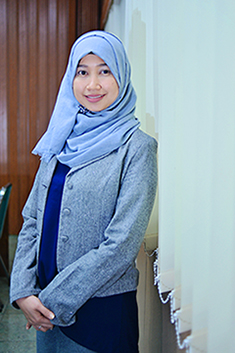Analysis of Drug Use in Non-Ventilator Covid-19 Patients at Bangil Hospital
Downloads
Background: Coronavirus Disease 2019 (Covid-19) is an infectious disease. Common signs and symptoms of Covid-19 infection include acute respiratory distress such as fever, cough and shortness of breath. Analysis of drug use in Non-Ventilator Covid-19 patients needs to be carried out to provide an overview of drug therapy currently being used based on the Covid-19 Management Guidelines Edition 3rd because so far, there has not been a single type of drug that has received marketing authorization for Covid-19 therapy. Objectives: This study aims to determine patient profiles, therapeutic outcomes, suitability of drug use with Covid-19 Management Guidelines 3rd edition, the quantity of antibiotic use using the DDD/100 patient-days method and antivirals. Methods: The method used in this study is an observational design study which was analyzed descriptively with retrospective data collection. Result: Based on the profile of drug use in COVID-19 patients, there are 31 types of drug classes. The most consumed drugs were antibacterial (91%) and analgesics (91%), followed by vitamins (89%) and supplements (85%). Based on the DDD/100 patient-days value, the most widely used antibiotics were Azithromycin. Conclusion: The patient's profile at the time of admission to the hospital was 44% moderate and 56% severe. The condition of patients at the time of discharge from the hospital with a moderate degree using antivirals and antibiotics were more recovered and returned home with improvements with percentages of 84.1% and 88.64%, respectively.
Burhan E, Susanto AD, Nasution SA, Ginanjar E, Pitoyo W, Susilo A, et al. (2020). Guidelines for the Management of Covid - 19. ed.3, Jakarta December.https://www.covid19treatmentguidelines.nih.gov/. Accessed: 10 Oktober 2021.
Esmaeil, M. H., Jamaatic, N. D. R. Hakime, S., Maryam, M., Mirenayat, Mohsen S., Somayeh, L., N. K., K. (2022). Decreased serum levels of angiotensin converting enzyme (ACE)-2 and enhanced cytokine levels with severity of COVID-19: normalization upon disease recovery. J Heliyon: 8(2).https://doi.org/10.1016/j.heliyon.2022.e08957.
Gennaro, F. Di, Pizzol, D., Marotta, C., Antunes, M., Racalbuto, V., Veronese, N., Smith, L. (2020). Coronavirus Diseases (COVID-19 Current Status and Future Perspectives : A Narrative Review. International Journal of Environmental Research and Public HealthEnvironmental Research and Public Health, 17(2690), 1–11. doi: 10.3390/ijerph17082690.
Goncalves Mendes Neto A, Lo KB, Wattoo A, Salacup G, Pelayo J, DeJoy R, et al. (2020). Bacterial infections and patterns of antibiotic use in patients with COVID-19. J Med Virol. 1–7. doi: 10.1002/jmv.26441.
Gutierrez-Abejón E, Tamayo E, Martín-García D, Javier Álvarez F, Herrera-Gómez F. (2020). Clinical profile, treatment and predictors during the first Covid-19 wave: A population-based registry analysis from castile and leon hospitals. Int J Environ Res Public Health. 17(24):1–15. doi: 10.3390/ijerph17249360.
Hiroyuki, N., Yosihiro, N., Hisako, M., Naoya, S., Akiko, S., Sathosi, K., The Japanese Respiratory Society, Scientific Assembly for Allergy, Immunology, and Inflammation. (2021). The prevalence of comorbid respiratory disease among COVID-19 patients, and mortality during the first wave in Japan: A nationwide survey by the Japanese Respiratory Society. J Respiratory Investigation. 59(5): 679-682. doi: https://doi.org/10.1016/j.resinv.2021.06.008.
Huipeng Ge, Xiufen Wang, Xiangning Yuan. (2020). The epidemiology and clinical information about COVID - 19, Springer-Verlag GmbH Germany. doi: 10.1007/s10096-020-03874-z.
Jordana, G. A., Coelho, R., Geovane M. F., Alice, A. L., Ágata L. R., Camila P. S., Martinsda, M. (2022). Ex-vivo mucolytic and anti-inflammatory activity of BromAc in tracheal aspirates from COVID-19. J Biomedicine and Pharmacotherapy: 148. https://www.researchgate.net/publication/358853000_Ex-vivo_Mucolytic_and_Anti inflammatory_Activity_of_BromAc_in_Tracheal_Aspirates_From_COVID-19.
Kim MS, An MH, Kim WJ, Hwang T-H. (2020). Comparative efficacy and safety of pharmacological interventions for the treatment of COVID - 19: A systematic review and network meta analysis. PLoS Med 17(12). doi: 10.1371/journal.pmed.1003501.
Lapostolle, F., Schneider, E., Vianu, I., Dollet, G., Roche, B., Berdah, J., Adnet, F. (2020). Clinical Features of 1487 COVID"‘19 Patients with Outpatient Management in the Greater Paris : the COVID "‘ Call Study. Internal and Emergency Medicine. doi: 10.1007/s11739-020-02379-z.
Laura, S., Catherine, K. E., Salma, M. A., Elizabeth, C., Kimberly, D., Kevin, J. L., Sandro, G. (2021). Financial hardship and health risk behavior during COVID-19 in a large US national sample of women. J Population Health. 13. doi: 10.1016/j.ssmph.2021.100734.
Luis, F.R., Alejandro, R., Alirio, B. D. P., Tanouxa, Y. V. Fuentesa, Esteban G. G., M. LIVEN-COVID-19 Investigators and COVID-19 SEMICYUC Study Group. (2022). Dexamethasone as risk-factor for ICU-acquired respiratory tract infections in severe COVID-19. J Critical Care, 69. doi: 10.1016/j.jcrc.2022.154014.
Naoyuki, M., Yashuhi, N., Makoto, O., naoki, F., Akihisa, Y., Yoshihisa, I., Shosaku, N. (2022). Early identification of novel coronavirus (COVID-19) pneumonia using clinical and radiographic findings. J Infection and Chemotherapy. 28(5): 718-721. doi: 10.1016/j.jiac.2022.02.005.
PDPI, PERKI, PERDATIN, IDAI, Covid-19 Administration Guidelines 3rd edition, Jakarta, December 2020.
https://www.papdi.or.id/pdfs/983/Buku%20Pedoman%20Tatalaksana%20COVID19%205OP%20Edisi%203%202020.pdf. Accessed: 20 January 2022.
Rodrigo da Rosa Mesquita, Luiz Carlos Francelino Silva Junior, Fernanda Mayara Santos Santana. (2020). Clinical manifestations of COVID-19 in the general population: systematic review, Springer-Verlag GmbH Austria, part of Springer Nature. doi:
https://doi.org/10.3390/jcm10102201.
Setiadi AP, Wibowo YI, Halim S V., Brata C, Presley B, Setiawan E. (2020). Therapeutic Management of Patients with COVID - 19: A Narrative Study. Indones J Clin Pharm. 9(1):70. doi: 10.15416/ijcp.2020.9.1.70.
Singh TU, Parida S, Lingaraju MC, Kesavan M, Kumar D, Singh RK. (2020). Drug repurposing approach to fight COVID - 19. Pharmacol Reports. 72(6):1479–508. doi: 10.1007/s43440-020-00155-6.
Somers EC, Eschenauer GA, Troost JP, Golob JL, Gandhi TN, Wang L. (2020). Tocilizumab for treatment of mechanically ventilated patients with COVID - 19. medRxiv. doi: 10.1093/cid/ciaa954.
Tsamrotul Ilmi, Rika Yulia, Fauna Herawati. (2020). Evaluation of the use of antibiotics in pneumonia patients at the Tulungagung Regional General Hospital, Surabaya. https://www.researchgate.net/publication/344643349_EVALUASI_PENGGUNAAN_ANTIBIOTIK_PADA_PASIEN_PNEUMONIA_DI_RUMAH_SAKIT_UMUM_DAERAH_TULUNGAGUNG. Accessed: 10 February 2022.
Wiersinga WJ, Rhodes A, Cheng AC, Peacock SJ, Prescott HC. (2020). Pathophysiology, Transmission, Diagnosis, and Treatment of Coronavirus Disease 2019 (COVID - 19): A Review. JAMA - J Am Med Assoc: 324(8):782–93. doi: 10.1001/jama.2020.12839.
World Health Organization. (2021). Covid-19 Clinical Management Living Guidedance. https://www.who.int/publications/i/item/WHO-2019-nCoV-clinical-2021-2. Accessed: 20 January 2022.
Copyright (c) 2022 JURNAL FARMASI DAN ILMU KEFARMASIAN INDONESIA

This work is licensed under a Creative Commons Attribution-NonCommercial-ShareAlike 4.0 International License.
1. The copyright of this journal belongs to the Editorial Board and Journal Manager with the author's knowledge, while the moral right of the publication belong to the author.
2. The formal legal aspect of journal publication accessibility refers to the Creative Commons Attribution-Non-Commercial-Share Alike (CC BY-NC-SA), which implies that the publication can be used for non-commercial purposes in its original form.
3. Every publication (print/electronic) is open access for educational, research, and library purposes. In addition to the objectives mentioned above, the editorial board is not responsible for copyright infringement


.jpg)















